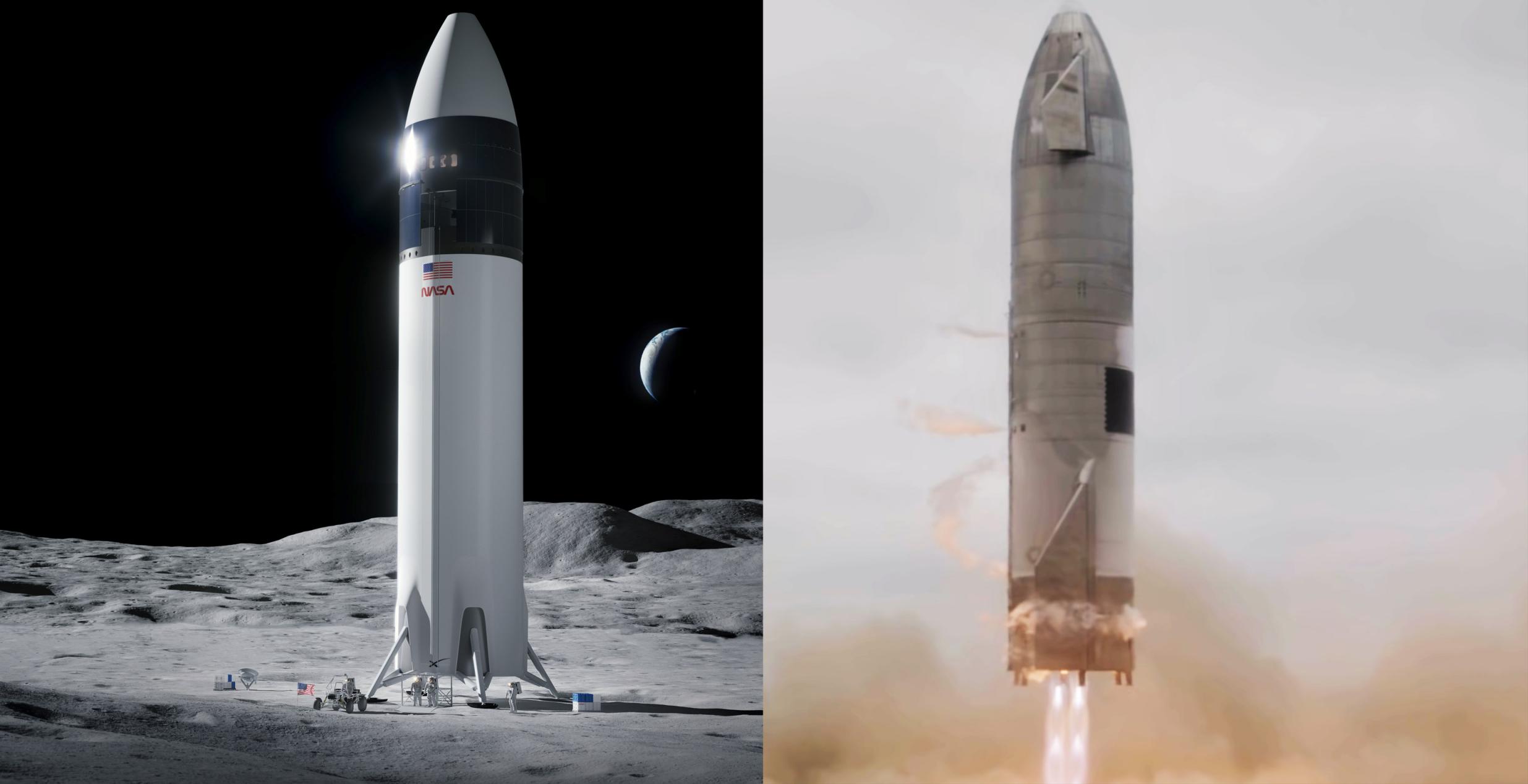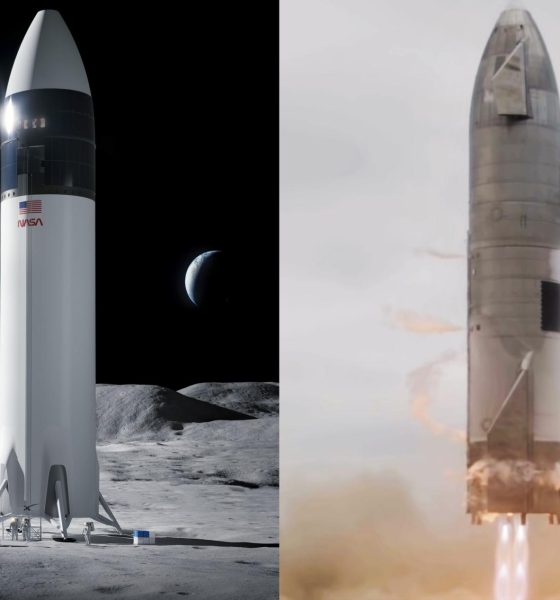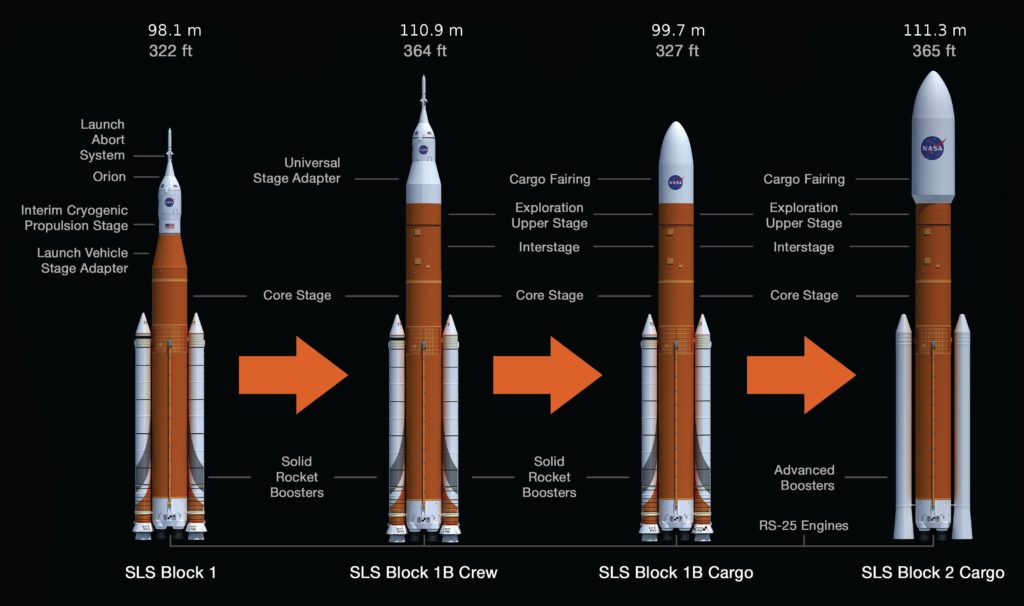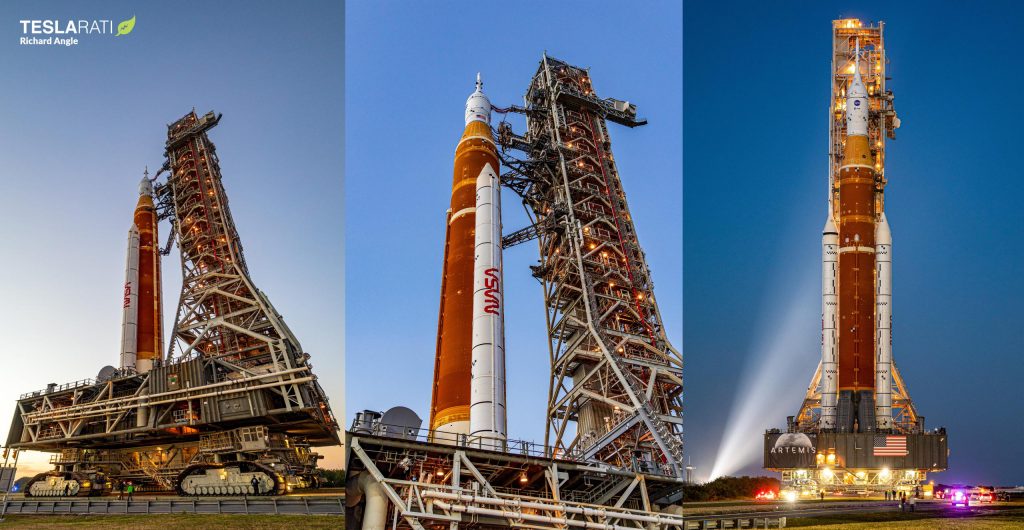

News
NASA contracts SpaceX for a second crewed Starship Moon landing
NASA says it exercised a contract option to purchase a second crewed Starship Moon landing from SpaceX.
Aside from its general existence, though, very little else is known about the new contract. NASA has yet to discuss when it will launch or which Artemis mission it will be attached to. A step further, it’s not actually clear why two crewed “demonstrations” are needed or what the difference between those two missions is. But more importantly, a broader Artemis Program manifest overview published days later revealed that NASA has plans for a truly unusual gap in crewed Moon landings in the mid-2020s.
Mere days after the announcement, an official NASA schedule showing the agency’s plans for the Moon and Mars over the next ten years explicitly contradicted it, showing only two Starship HLS demonstrations: one uncrewed and one crewed. Assuming that was simply a matter of poor coordination, the graphic reveals another bizarre reality: NASA appears to be explicitly planning for a three-year gap between SpaceX’s first crewed Starship landing in 2025 and the next crewed Moon landing, which the graphic suggested might occur in 2028.
Every single crewed Apollo Program mission to the Moon – including one aborted circumlunar mission, two missions to lunar orbit, and six successful landings – happened in less than four years. As published, NASA’s current Artemis plan would be akin to completing Apollo 11 – the first crewed Moon landing – in 1969 and then sitting around and waiting until 1972 for the next landing attempt. It’s difficult to properly convey just how bizarre such a huge gap would be.
There are only two obvious possible explanations. First, NASA might prefer a multi-year delay between crewed Moon landings to building and launching another SLS Block 1 rocket, in which case the three-year landing gap is explicitly the fault of years of SLS Block 1B delays – specifically NASA and Boeing’s work on the rocket’s larger Exploration Upper Stage (EUS). Second, it could be the case that NASA and/or SpaceX expects Starship’s first crewed landing to be delayed by one or several years. In 2018, SLS Block 1B was expected to debut as early as 2024. In 2022, NASA now says Block 1B will debut no earlier than 2027, while the last Block 1 launch is NET 2025.

The first explanation is arguably much likelier given that structuring schedules based on the assumption of delays would make very little logistical sense. If SpaceX were to be ready on or close to the original schedule, that would leave NASA’s Moon landing program sitting on its hands for a third of a decade. In an alternative scenario, if NASA was planning to take full advantage of every year it has and SpaceX’s Starship demonstration was still delayed, the space agency would simply end up with more SLS and Orion hardware on hand than it planned for – only a problem if the rocket is literally incapable of launching more than once every year or two. There are few conceivable scenarios where having a mission waiting on a rocket would be preferable to having a rocket waiting for a mission
In other words, NASA probably doesn’t want to plan for a three-year gap between crewed Moon landings. Rather, the anchor NASA has chained the Artemis Program to – SLS and Orion – is likely giving it no choice in the matter. Worse, if SLS Block 1B and EUS development are as poorly managed as SLS Block 1, it’s possible – if not likely – that Artemis IV and V will slip another year or two. As a result, even in the likely scenario that SpaceX’s crewed HLS demonstration runs into a year or so of delays, there could still be a three or even four-year gap between crewed NASA Moon landings right when the program should be getting up to speed.
SpaceX, meanwhile, is privately developing Starship with the ultimate intent of landing humans on Mars. Without NASA’s interest and support, the Moon is a distraction from SpaceX’s real goals. Additionally, through NASA’s Human Landing System (HLS) program, SpaceX will be providing Starship as a service, meaning that the company will retain full rights to and ownership of any system that results. Put simply, there’s a real possibility that NASA’s seemingly extraordinary lack of motivation will create a scenario in which SpaceX could outgrow the space agency’s usefulness in the mid-2020s.

If, for example, SpaceX privately human-rates Starship for launches and entry, descent, and landing; it could use the Starship HLS lander it’s developed with NASA to land its own astronauts on the Moon without the need for SLS, Orion, or NASA. Given that the full extent of NASA’s Artemis Program ambitions appears to be one Moon landing per year, there would be plenty of room for SpaceX to perform multiple additional landings independent of NASA while the space agency’s contractors struggle to build and launch a single SLS rocket in the same time-frame.
Given the political power behind the SLS/Orion programs, it’s not clear if NASA will ever be willing or able to publicly support or take advantage of that logical and likely inevitable maturation of SpaceX’s Starship HLS capabilities. A crewed Moon mission – and especially a crewed Starship landing – successfully completed without the need for SLS or Orion could put NASA’s unsustainable rocket and spacecraft in a very uncomfortable position. Already, the HLS program has relegated SLS/Orion to the role of an Earth-Moon taxi service that just so happens to cost more than $4 billion per launch.
Above all else, uncertainty continues to reign over NASA’s longer-term human spaceflight plans – helped in no small part by the space agency’s lack of any obvious overarching strategy. NASA officials may religiously repeat phrases about how the Artemis Program aims to “sustainably” return humans to the Moon and pave the way to landing astronauts on Mars, but that doesn’t change the fact that the agency’s tangible, funded plans show virtually no evidence of serious preparations for either goal. Only time will tell where that rudderless ship ends up.

News
Tesla FSD fleet is nearing 7 billion total miles, including 2.5 billion city miles
As can be seen on Tesla’s official FSD webpage, vehicles equipped with the system have now navigated over 6.99 billion miles.

Tesla’s Full Self-Driving (Supervised) fleet is closing in on almost 7 billion total miles driven, as per data posted by the company on its official FSD webpage.
These figures hint at the massive scale of data fueling Tesla’s rapid FSD improvements, which have been quite notable as of late.
FSD mileage milestones
As can be seen on Tesla’s official FSD webpage, vehicles equipped with the system have now navigated over 6.99 billion miles. Tesla owner and avid FSD tester Whole Mars Catalog also shared a screenshot indicating that from the nearly 7 billion miles traveled by the FSD fleet, more than 2.5 billion miles were driven inside cities.
City miles are particularly valuable for complex urban scenarios like unprotected turns, pedestrian interactions, and traffic lights. This is also the difference-maker for FSD, as only complex solutions, such as Waymo’s self-driving taxis, operate similarly on inner-city streets. And even then, incidents such as the San Francisco blackouts have proven challenging for sensor-rich vehicles like Waymos.
Tesla’s data edge
Tesla has a number of advantages in the autonomous vehicle sector, one of which is the size of its fleet and the number of vehicles training FSD on real-world roads. Tesla’s nearly 7 billion FSD miles then allow the company to roll out updates that make its vehicles behave like they are being driven by experienced drivers, even if they are operating on their own.
So notable are Tesla’s improvements to FSD that NVIDIA Director of Robotics Jim Fan, after experiencing FSD v14, noted that the system is the first AI that passes what he described as a “Physical Turing Test.”
“Despite knowing exactly how robot learning works, I still find it magical watching the steering wheel turn by itself. First it feels surreal, next it becomes routine. Then, like the smartphone, taking it away actively hurts. This is how humanity gets rewired and glued to god-like technologies,” Fan wrote in a post on X.
News
Tesla starts showing how FSD will change lives in Europe
Local officials tested the system on narrow country roads and were impressed by FSD’s smooth, human-like driving, with some calling the service a game-changer for everyday life in areas that are far from urban centers.

Tesla has launched Europe’s first public shuttle service using Full Self-Driving (Supervised) in the rural Eifelkreis Bitburg-Prüm region of Germany, demonstrating how the technology can restore independence and mobility for people who struggle with limited transport options.
Local officials tested the system on narrow country roads and were impressed by FSD’s smooth, human-like driving, with some calling the service a game-changer for everyday life in areas that are far from urban centers.
Officials see real impact on rural residents
Arzfeld Mayor Johannes Kuhl and District Administrator Andreas Kruppert personally tested the Tesla shuttle service. This allowed them to see just how well FSD navigated winding lanes and rural roads confidently. Kruppert said, “Autonomous driving sounds like science fiction to many, but we simply see here that it works totally well in rural regions too.” Kuhl, for his part, also noted that FSD “feels like a very experienced driver.”
The pilot complements the area’s “Citizen Bus” program, which provides on-demand rides for elderly residents who can no longer drive themselves. Tesla Europe shared a video of a demonstration of the service, highlighting how FSD gives people their freedom back, even in places where public transport is not as prevalent.
What the Ministry for Economic Affairs and Transport says
Rhineland-Palatinate’s Minister Daniela Schmitt supported the project, praising the collaboration that made this “first of its kind in Europe” possible. As per the ministry, the rural rollout for the service shows FSD’s potential beyond major cities, and it delivers tangible benefits like grocery runs, doctor visits, and social connections for isolated residents.
“Reliable and flexible mobility is especially vital in rural areas. With the launch of a shuttle service using self-driving vehicles (FSD supervised) by Tesla in the Eifelkreis Bitburg-Prüm, an innovative pilot project is now getting underway that complements local community bus services. It is the first project of its kind in Europe.
“The result is a real gain for rural mobility: greater accessibility, more flexibility and tangible benefits for everyday life. A strong signal for innovation, cooperation and future-oriented mobility beyond urban centers,” the ministry wrote in a LinkedIn post.
News
Tesla China quietly posts Robotaxi-related job listing
Tesla China is currently seeking a Low Voltage Electrical Engineer to work on circuit board design for the company’s autonomous vehicles.

Tesla has posted a new job listing in Shanghai explicitly tied to its Robotaxi program, fueling speculation that the company is preparing to launch its dedicated autonomous ride-hailing service in China.
As noted in the listing, Tesla China is currently seeking a Low Voltage Electrical Engineer to work on circuit board design for the company’s autonomous vehicles.
Robotaxi-specific role
The listing, which was shared on social media platform X by industry watcher @tslaming, suggested that Tesla China is looking to fill the role urgently. The job listing itself specifically mentions that the person hired for the role will be working on the Low Voltage Hardware team, which would design the circuit boards that would serve as the nervous system of the Robotaxi.
Key tasks for the role, as indicated in the job listing, include collaboration with PCB layout, firmware, mechanical, program management, and validation teams, among other responsibilities. The role is based in Shanghai.
China Robotaxi launch
China represents a massive potential market for robotaxis, with its dense urban centers and supportive policies in select cities. Tesla has limited permission to roll out FSD in the country, though despite this, its vehicles have been hailed as among the best in the market when it comes to autonomous features. So far, at least, it appears that China supports Tesla’s FSD and Robotaxi rollout.
This was hinted at in November, when Tesla brought the Cybercab to the 8th China International Import Expo (CIIE) in Shanghai, marking the first time that the autonomous two-seater was brought to the Asia-Pacific region. The vehicle, despite not having a release date in China, received a significant amount of interest among the event’s attendees.








